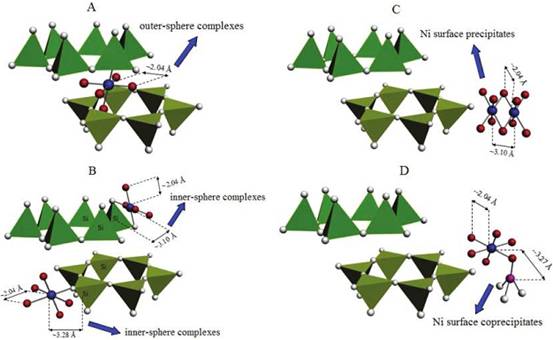
count: [2012-09-27] [Close]
The research group led by Prof. Wang finds that the species and microstructures of heavy metal ions are liable to change at molecular level with contact time, although the amount of heavy metal ions adsorbed on clay minerals does not change with increasing contact time form the batch experiments.
In the research, they used extended X-ray absorption fine structure (EXAFS) technique to study the microstructures and interaction mechanisms of heavy metal ions and radionuclides with clay minerals as different experimental conditions such as pH, contact time, temperature and humic substances. The researchers have also illustrated the species and interaction mechanisms of Ni(II) with minerals at variously experimental conditions.
At present, people are more and more concerned with contamination of surface and subsurface environment by heavy metals and radionuclides, as the manufacturing and use of synthetic products could result in metal ions contamination of aqueous solutions and agricultural soils. Therefore, research on variously geochemical and biogeochemical process that control the concentrations, fate, and transport of heavy metal and radionuclide contaminants in subsurface environments is of particular importance.
From this point of view, the experimental results are important to understand the physicochemical behavior of heavy metal ions and radionuclides with clay minerals in the natural environment. Their results are published in international journals such as Geochimica Cosmochimica Acta (2011, 75: 6520); Enviromental Science & Technology (2011, 45: 7718); and Dalton Transactions (2011, 40:10953). (Wang Ying reports)

The species and interaction mechanisms of heavy metal ion(Ni) with diatomite at different experimental conditions.